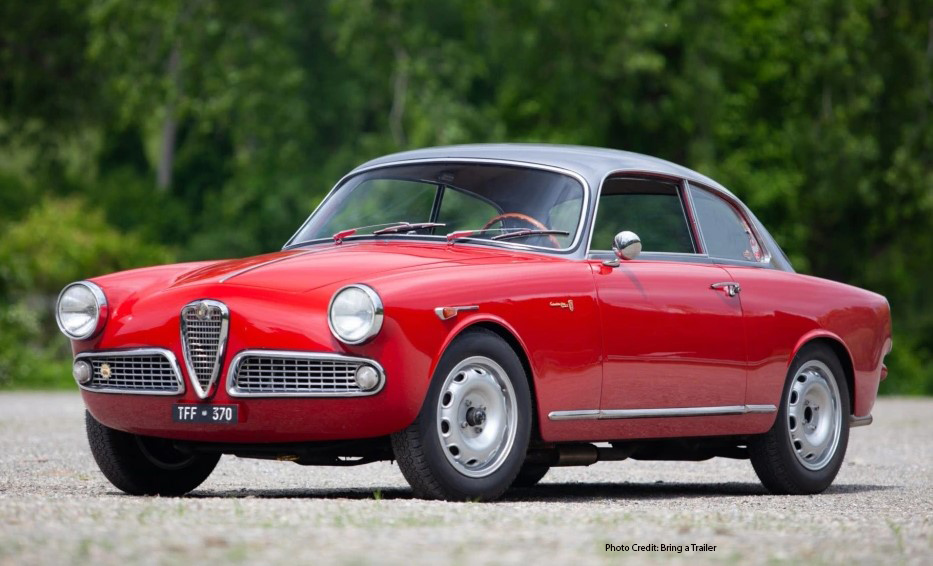
A 1960 Alfa Giulietta Sprint recently sold on BaT for $92,500 ($97,125 with commission).
Matt Crandall (911r on Bat) of the Avant-Garde Collection texted me about the car when the bidding was in the $50k range.
Matt specializes in Porsches, both stock and outlaw, but has a long history with Alfa. He and I are both past managers of Ron Tonkin Grand Turismo, when it was a Ferrari, Maserati, Alfa (and sometime Lotus and Zimmer) new car dealership.
Matt was getting all hot and bothered about the car. It was a semi-hot rod build, and was said to have run in the Copperstate 1000.
While the car looked well-done, I explained to Matt why it didn’t appeal to me.
My views on “correct” restorations have been evolving over the years. In the past, I was a stickler for “as factory built.”
Both my 1958 Giuiletta Sprint Veloce “Confortevole” and my 1961 Giuietta Sprint Special were numbers-matching cars, and restored with a fealty to the specifications they left the factory with.
The BaT Sprint was what we Alfiisti call an Abnormale. From what I could glean from the listing, it was originally built as a 2-bbl Solex-equipped “Normale” and had been upgraded to hot-rod “Veloce” specs at some point in its life.
Born with a 101-series 1300cc engine, it had been upgraded to a later 105-series 1300cc engine punched out to 1400cc with twin Weber carbs. A more-modern five-speed replaced the original four-speed.
I have ruminated about the difficulties I encountered with my Sprint build. I enlisted local guru Denny Pillar to build the now-obsolete and archaic 750 series engine, and Bill Gillham sourced the synchros to rebuild the tunnel-case four-speed. It was an expensive and time-consuming process.
The end result was a free-revving responsive period pocket-rocket that was a delight to drive. But if I were to build another Sprint, I would start with a solid Normale chassis and put in a mild-build 1750cc engine and a five-speed, along with a 4.1 rear end. In most situations, this would be an easier car to tour with.
I told Matt that the 1960 Sprint was not my cup of tea for a few reasons. First, as the 101-series engine was gone, why bother to build a later 105-series 1300cc to 1400cc instead of dropping in a 1600 or 1750? Once the original engine is out of the picture, you are free to do what you want.
There were other modifications that were consistent with the semi-correct period personalization of the build. The Zagato style seats were interesting even if they never were used in Sprints, and it had the often-seen but period-incorrect TZ-style mags.
While I liked the two-tone red with silver roof paint, and I’ve seen in pictures of similar in-period paint schemes, I’m not sure if Sprints were ever born that way.
When I bought my Sprint Veloce, after ten years of looking, I dismissed all those who advised me to put a later drivertrain into it. I wanted a “correct” car.
That’s not the path I would follow today.
The new owner got a fair deal at nearly $100k for a pro-built car that has been event tested.
But as with all cars that are personalized, it’s not a car for a purist, its one for someone who wants to use and enjoy it.
The choices the builder made here were not necessarily the ones I would have made, but there is no right or wrong when you personalize a car when you bring it back to life. Notice I did not use the word restore.
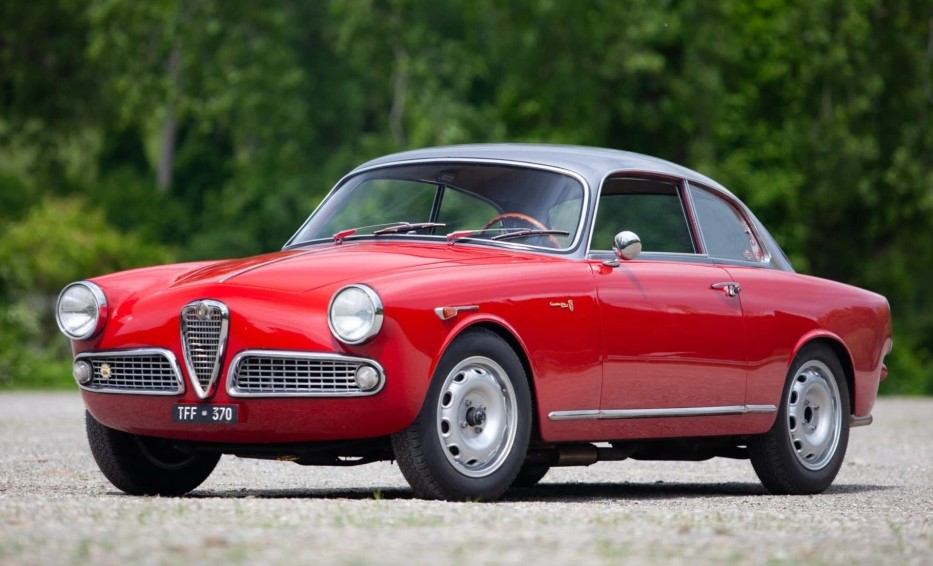
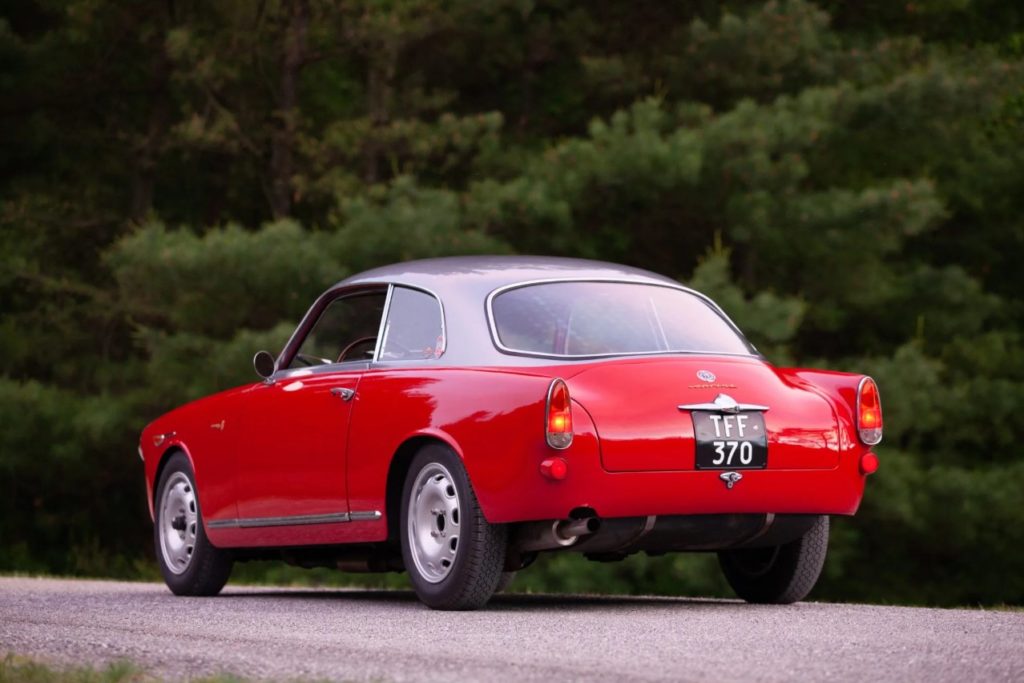
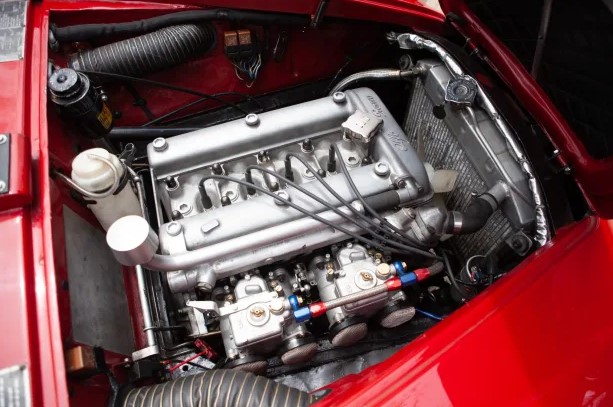
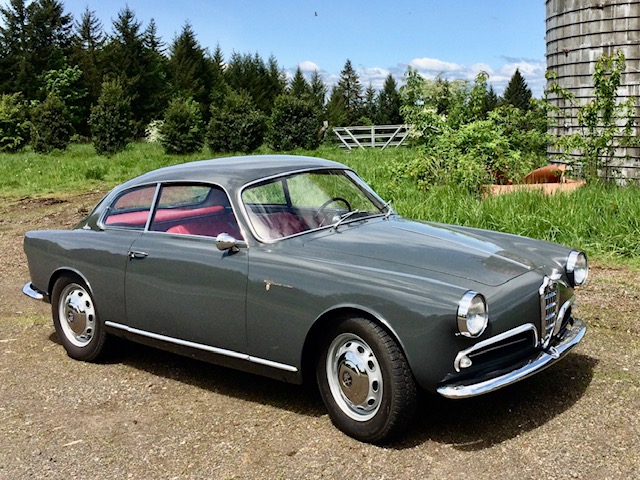
When I “personalized” my rust-free ‘87 Alfa Spider Quadrifoglio, I had it resprayed in its original black and replicated the fine red (dealer applied?) pinstripes along the sides. But then re-worked the tired grey seats and red carpet to red leather seats in original pattern and black carpet. Always loved this color combo. I also replaced the very eighties rocker panel covers with the much cleaner series 4 panels. A new Sunfast top and Classic Panasports with red calipers finished the job. I’ve now owned the car for 21 years and love it.
We’re not always lucky enough to find a rust free car. My first alfa was a neglected 1968 Duetto. I wound up having to replace everything from the cove down. At that point they weren’t worth a lot, so it didn’t matter what you did. Everything done was period accurate but not correct for the car. It has a GTA driveline, with a close ratio 5 speed and limited slip 4.56 read end. Some of the parts are repops and some are legit GTA parts. I’ve put close to 30k on the the car since it was finished and have tons of fun in it. Today purists may not like it but I didn’t build it for them. It all depends on what you start with. If it was a 100 point car or rare version, I priobably wouldn’t have done it that way but it a very good way to learn about a car. Just tear it down and rebuild it completely.. The purist really won’t care for what I’m doing with my 750 sprint normale. It is another neglected car and was not a complete vehicle. You’ll just have to wait and see when it’s finished.
I know the owner who built the car up here in the UK. It was done to a high standard at the time by an enthusiast and the car performed very well. I agree that original cars are nice, but this one was at least done with a good budget and to a good standard, not lashed together on the cheap! The two tone paintjob certainly makes a good difference to the large number of all red Sprints as well!
Keith,
As a long time collector of many Marques ,
Primarily used for the TSD rallies I drive in,
One has to ALWAYS think of resale , resale, resale….customizing a classic car to one’s own taste is foolhardy and reckless , not to mention the loss of “ originality “ which is, and always will be , Supreme. Typically ,
From my experience, an owner can lose upwards of 30% or more by deviating away from original specs , i.e. changing the engine, color , or interior ….Nothing beats Originality , Period !…..then when it’s time to sell, there are NO excuses !! The Seller in this case got very lucky ….having owned a Tipo 101 Sprint , I’ll bet the Seller celebrated !!
Rand
I completely agree, Rand! We are all interim caretakers of classic, investment grade sports cars. The importance of realizing an ROI (Return On Investment) is essential to both protecting our financial investment and preserving the car’s originality for future owners.
Any significant alteration of original specification immediately alters the car’s pedigree and provenance, forever affecting its appeal in the broader market. One person’s idea of creating a “dream car” becomes another person’s eyesore. When modifications are made, the impact on the car’s market value instantly results in a 30% (or greater) reduction in its value. I am a purist in the sense that while I love beautifully restored examples, the end-result needs to be as close to an original facsimile as when the car left the manufacturer.
Well-written and justified, Keith. As with you, I am a devotee of originality and specification. However, as you noted, once that chain has been broken, and your goal is to improve upon engine performance and horsepower, then taking the effort to significantly upgrade would, for me, be the desired restoration path. Case-in-point, I was recently interested in a beautifully restored 1958 Giulietta Spider Veloce on offer with a classic car dealer in Costa
Mesa (CA). In the process of restoring the car the original engine was replaced with a 1750 cc unit, reportedly to make the car more “usable” in contemporary traffic.
Because the restoration was of such superb quality (i.e., Concours), the non-original engine meant putting the car on the Concours field would either result in its disqualification or reassignment to a “resto-mod” category. Ultimately, another interested party accepted the modification and paid handsomely for a lovely but no longer restored-to-original spec Giulietta Spider.
I saw and tried to keep up with that car on the Colorado Grand in I think 2018 or 19. The driver and the car were amazing. It was worth every penny IMHO. I am sure the new owner is going to absolutely adore the car!